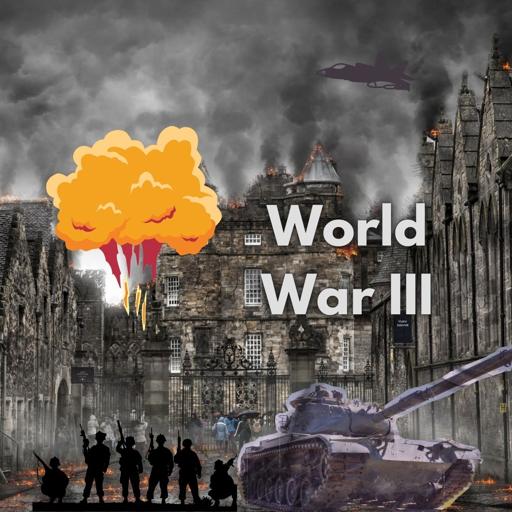The year was 2024, a year that would forever be marked as the catalyst of global destruction. In the United States, a razor-thin presidential election set the stage for unprecedented turmoil. The political landscape had grown increasingly polarized, with Republicans and Democrats locked in a bitter and prolonged dispute over the results. The integrity of the electoral process was questioned, accusations of fraud flew from both sides, and legal battles stretched on for months.
The stalemate in Washington paralyzed the government, and as tensions grew, so did the anger of the American people. Protests erupted in cities across the nation, at first peaceful, but soon devolving into violent clashes between opposing groups. Militias began to form, and the line between civilian unrest and organized rebellion blurred. The National Guard was called in to restore order, but in some states, even they were overwhelmed. As political leaders pointed fingers and offered no solutions, America teetered on the edge of civil war.
International observers watched in disbelief as the global superpower fractured from within. Russia, always opportunistic, saw this as the perfect moment to advance its geopolitical agenda. Under the pretext of protecting ethnic Russians in Eastern Europe, they launched a massive invasion of Ukraine, pushing further westward than anyone had expected. Poland and the Baltic states, alarmed by the swift Russian advance, pleaded for NATO intervention, but with the U.S. in disarray, European leaders hesitated. Internal divisions within the European Union over economic policy and defense spending hampered their ability to mount a united front.
China, observing America’s paralysis and Europe's dithering, made its move. In a calculated strike, Chinese forces invaded Taiwan, claiming it was an internal matter to bring the island back into the fold. Taiwanese resistance was fierce, bolstered by years of preparation for such an invasion, but without significant external support, the outcome was all but certain. The global response was muted, as world leaders grappled with their own crises at home.
Meanwhile, India and Pakistan, locked in their age-old rivalry, saw their simmering tensions in Kashmir boil over into all-out war. What began as a border skirmish escalated into full-scale military conflict. Both nations, armed with nuclear capabilities, inched ever closer to a terrifying standoff. In the absence of diplomatic intervention, the world feared a catastrophic exchange that could engulf South Asia in nuclear fire.
The Middle East, a region already scarred by decades of conflict, spiraled into further chaos. Israel, without the full backing of a fractured United States, found itself vulnerable. Emboldened by America’s absence, a coalition of Arab nations, led by Egypt and Jordan, launched a coordinated assault, hoping to capitalize on Israel’s isolation. The fighting was brutal, with both sides incurring heavy losses, and the conflict threatened to destabilize the entire region.
In the Persian Gulf, rivalries flared between Saudi Arabia and Qatar, with Riyadh accusing Doha of supporting insurgent groups. A swift invasion followed, drawing in other Gulf states and sparking a broader regional conflict. Iran, seizing the opportunity, launched its own campaign to dominate the oil-rich territories of the region, leading to bloody confrontations with Saudi forces.
As the Middle East burned, Turkey, eager to reassert its influence in the region, invaded northern Syria and Iraq under the guise of combatting terrorism. But Ankara’s ambitions were clear—to carve out a sphere of influence in the power vacuum left by the U.S. and Russia’s distractions. Kurdish forces, caught between multiple fronts, fought to defend their autonomous regions, but they were outnumbered and outgunned.
In Africa, conflict erupted as several nations faced coups, civil wars, and insurgencies, fueled by the chaos gripping the rest of the world. Russia and China, vying for influence on the continent, funneled arms to competing factions, turning African nations into proxies in their growing power struggle.
The world was unraveling. Each conflict seemed to feed another, creating a cascade of violence that spread across continents. Economies collapsed, millions were displaced, and global supply chains, already weakened by years of pandemic and political instability, disintegrated entirely. Food shortages sparked riots, and nations once thought stable fell into disorder.
By 2025, the map of the world was redrawn. Nations had fallen, new alliances had formed, and once-powerful empires were shadows of their former selves. The Great Collapse was not a single event, but a series of cascading failures—political, economic, and military—that shattered the fragile peace of the post-World War II order. There was no clear victor, only survivors, and even they were living in a world irreversibly altered by conflict.
And yet, as the flames of war spread, new threats emerged. With the world’s focus diverted to conventional warfare, extremist groups, long relegated to the fringes of society, saw their chance to rise. From the deserts of the Middle East to the jungles of Southeast Asia, insurgencies grew bolder, challenging both weakened governments and occupying forces. In some regions, warlords replaced governments altogether, creating lawless territories where only might made right.
As 2026 dawned, the conflicts showed no signs of abating.
World War III had begun not with a singular attack, but with the collapse of the global order itself.
